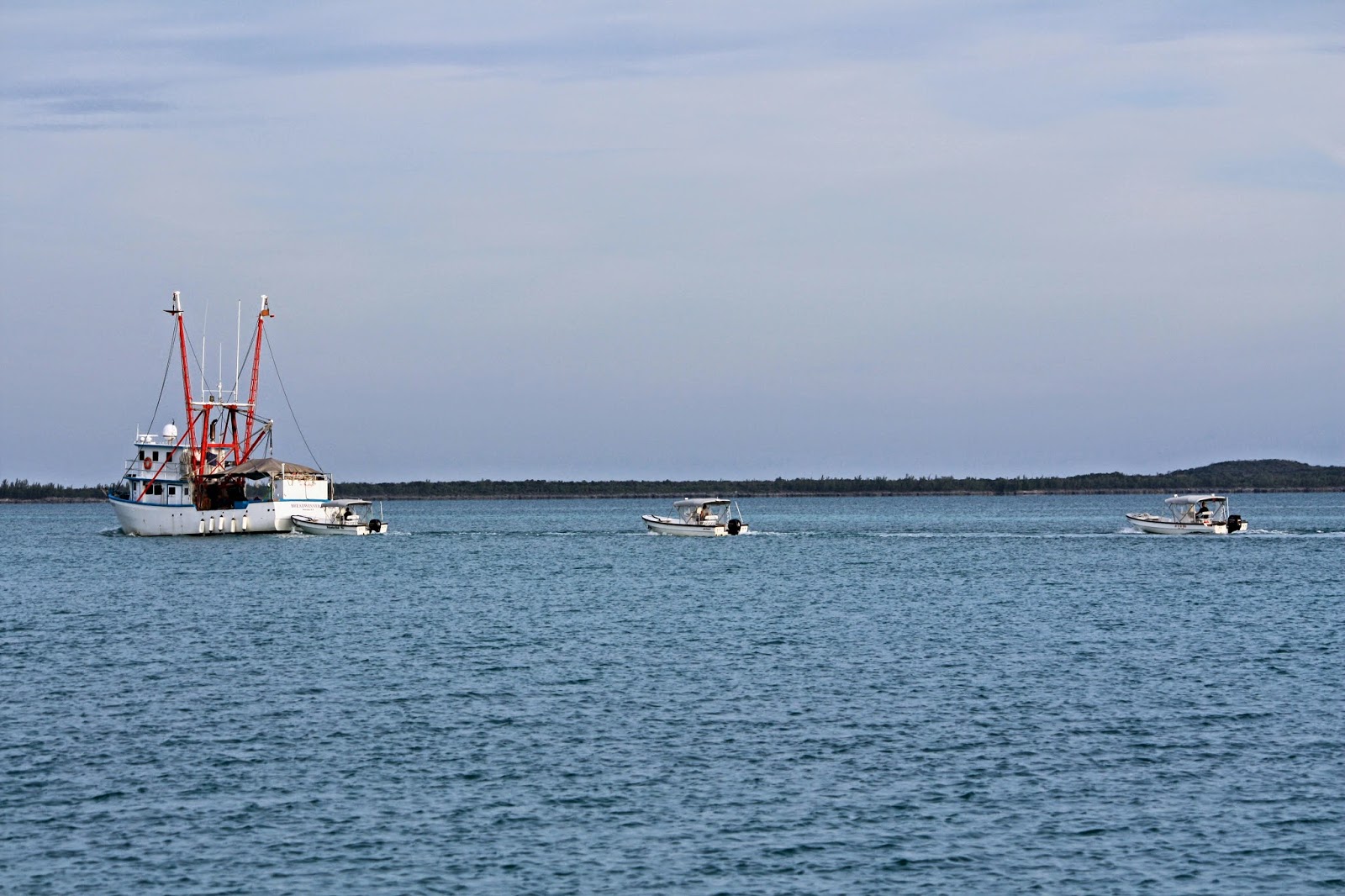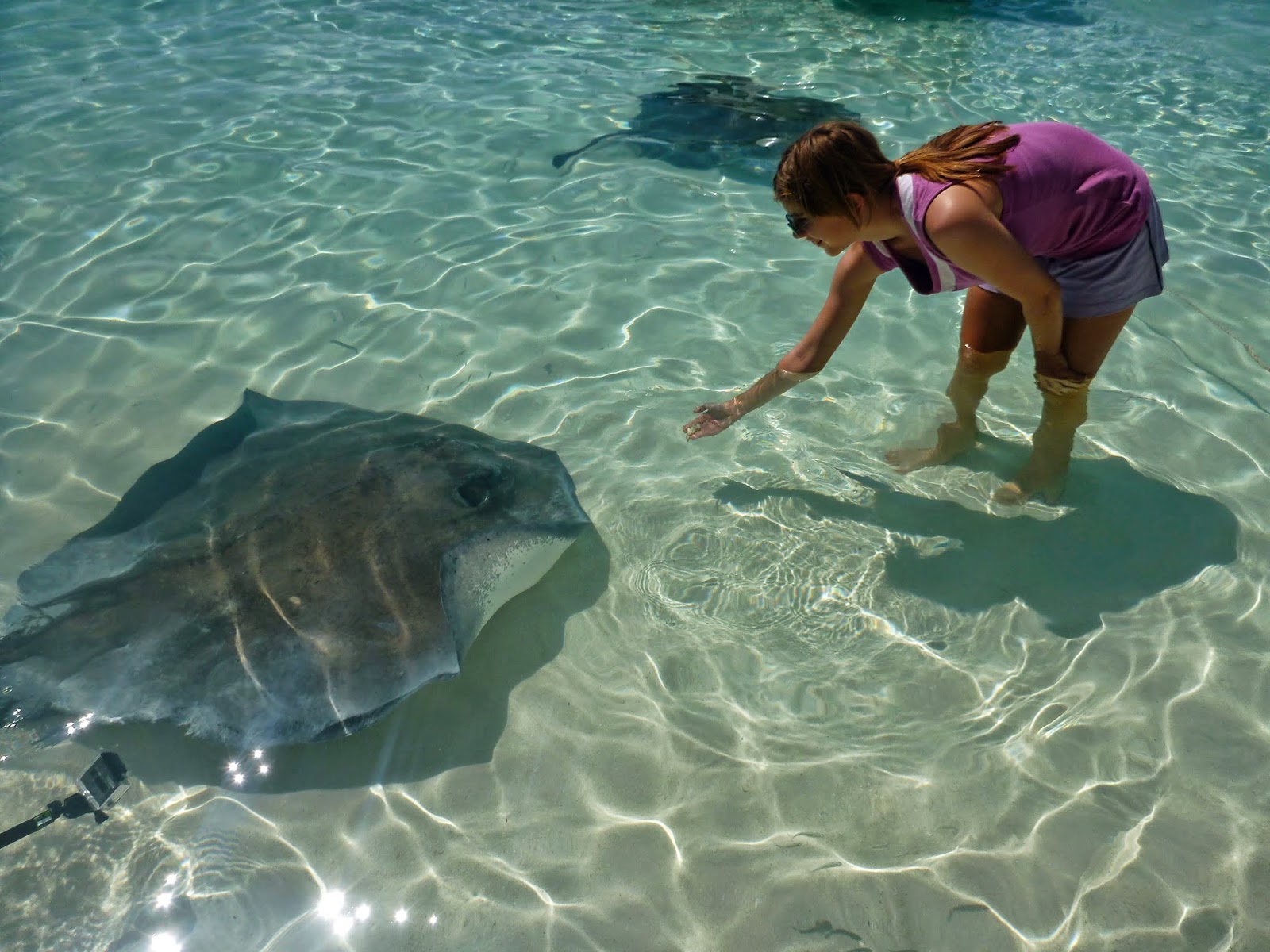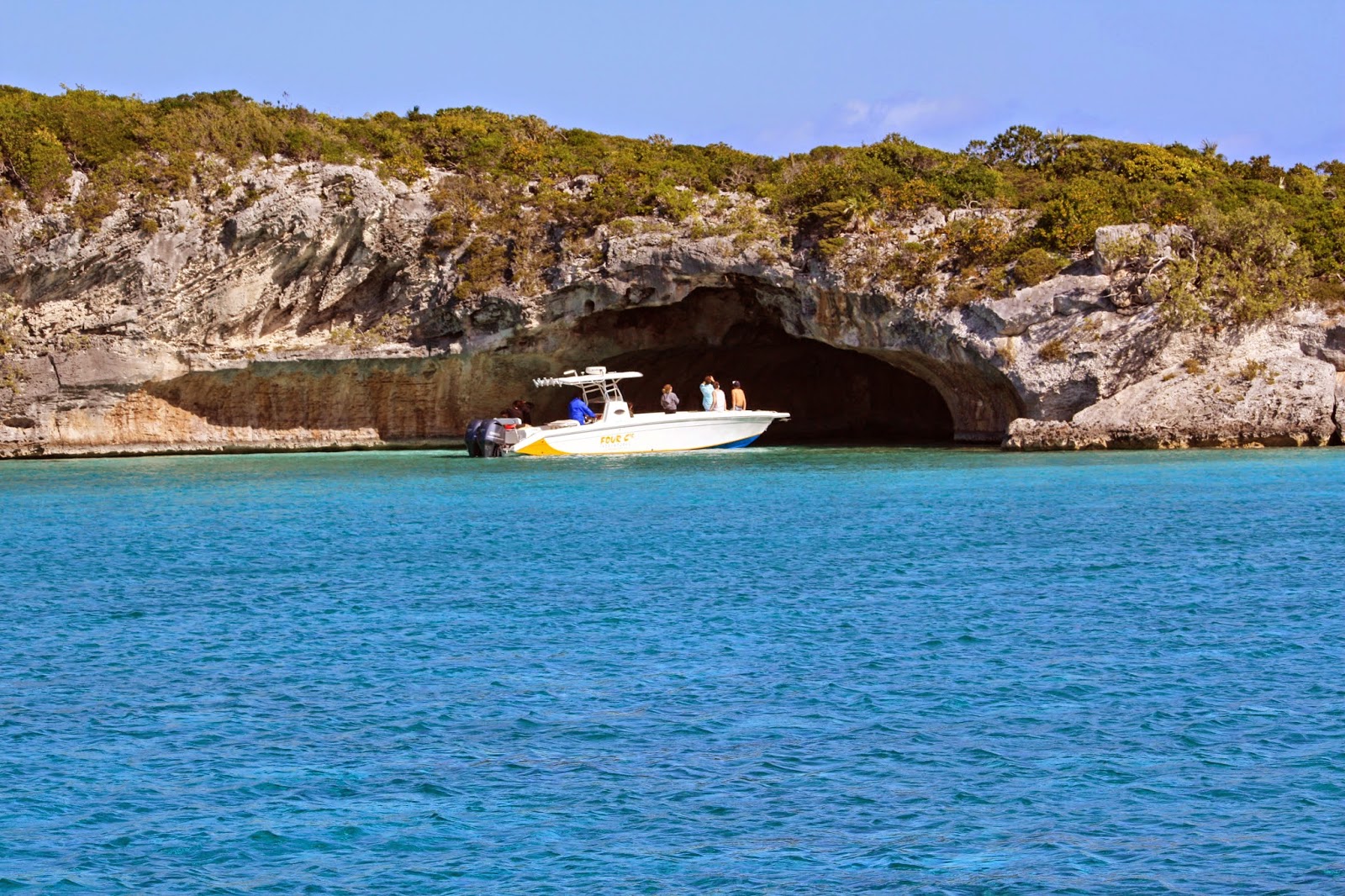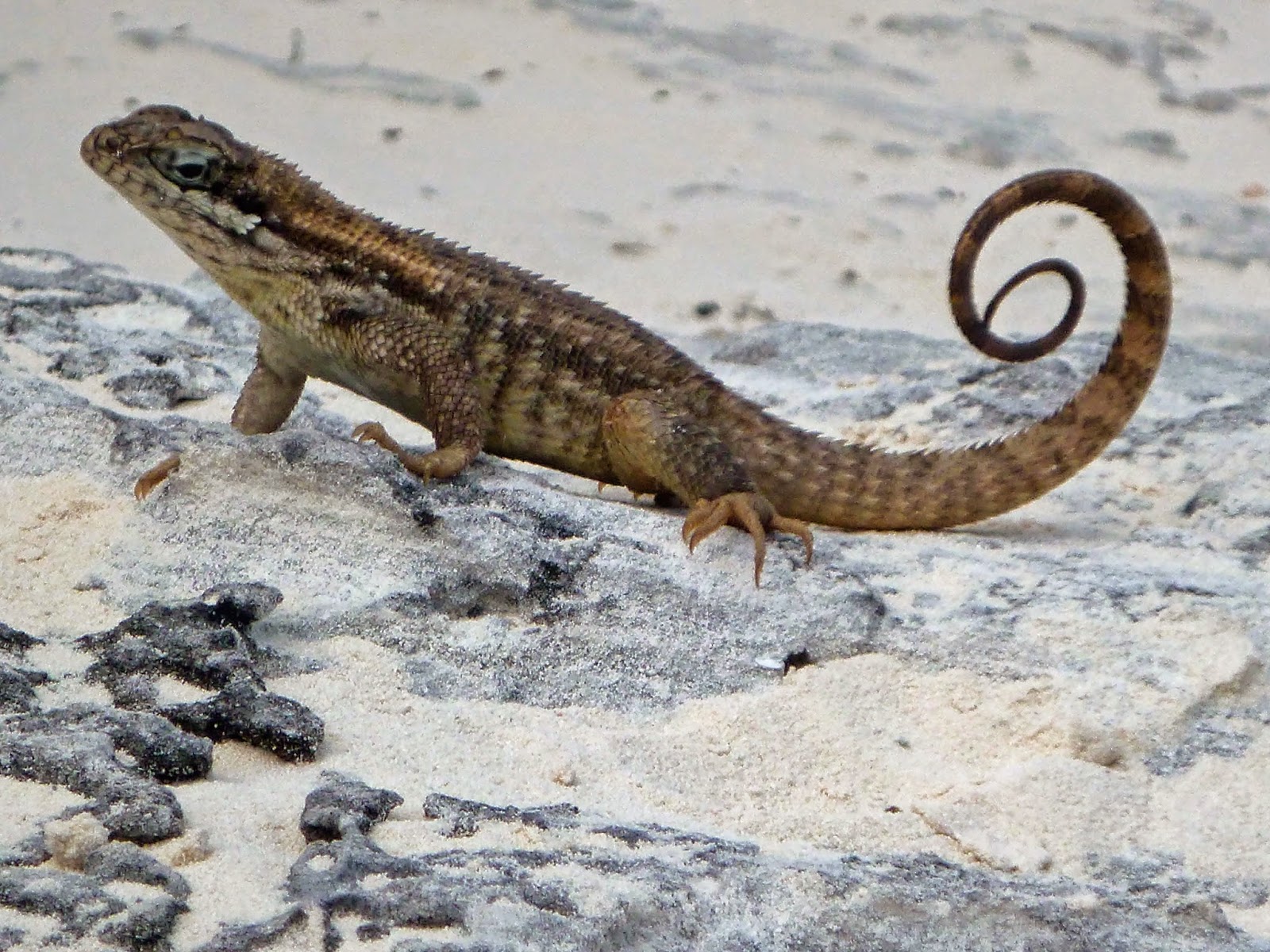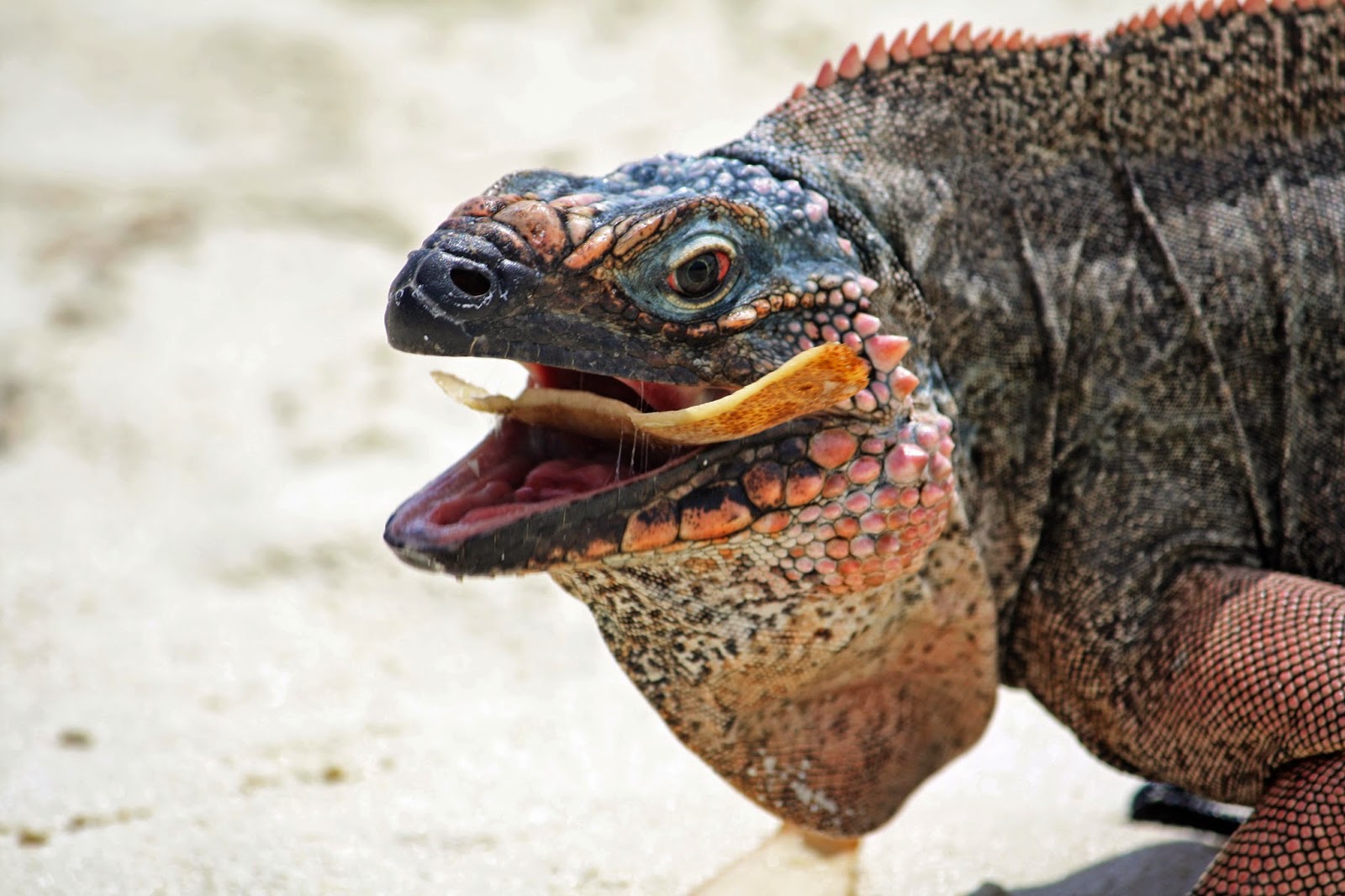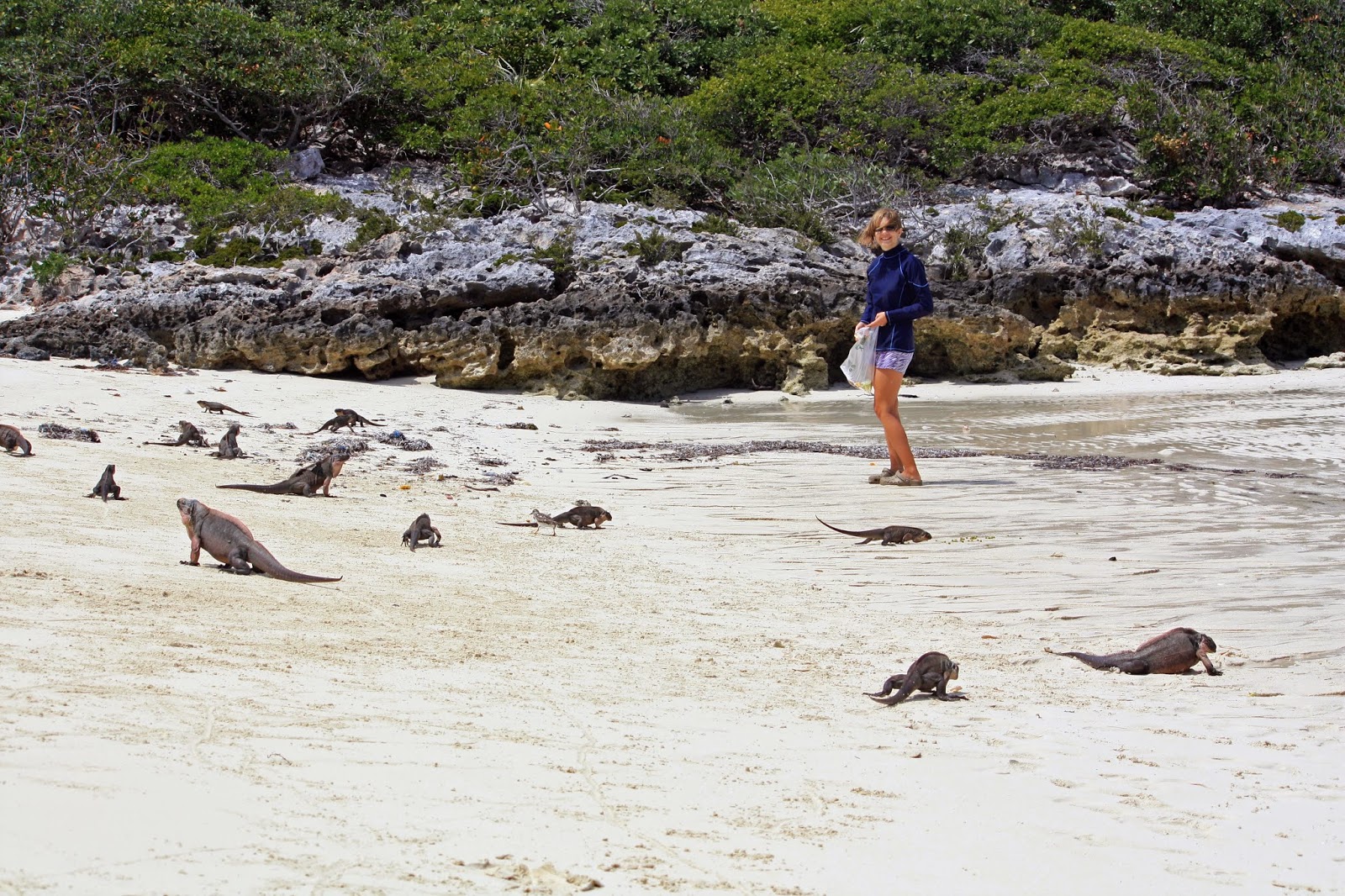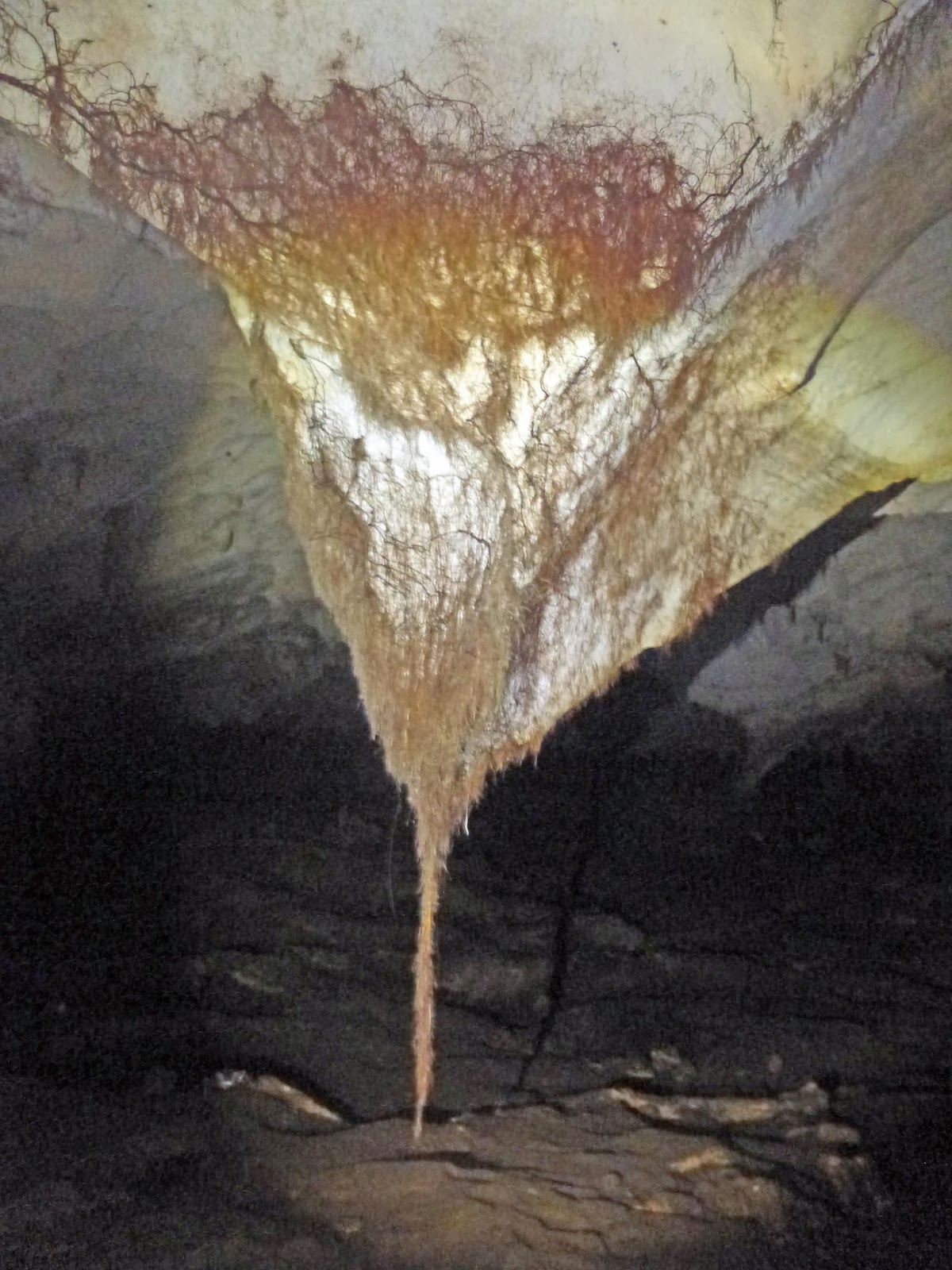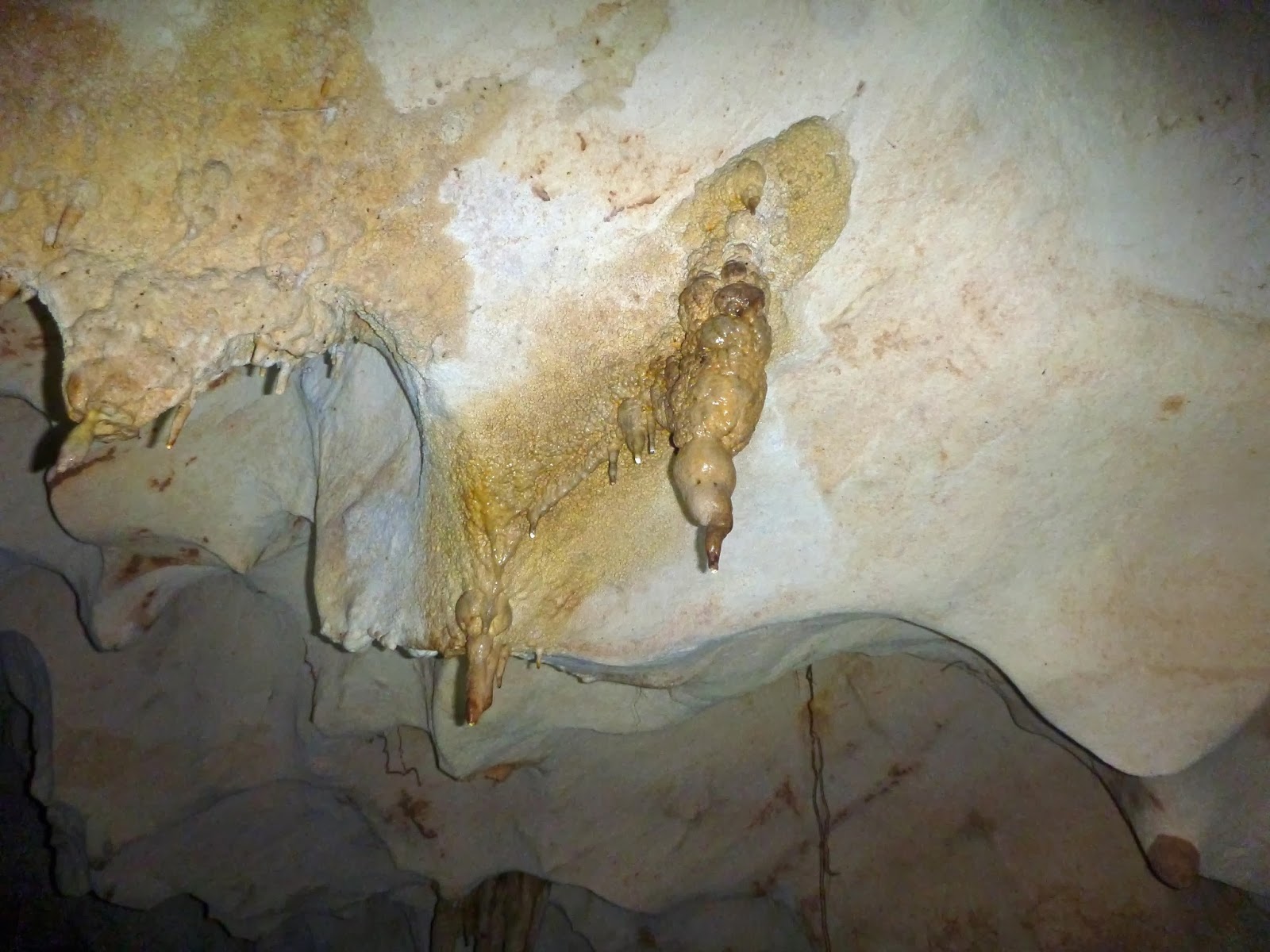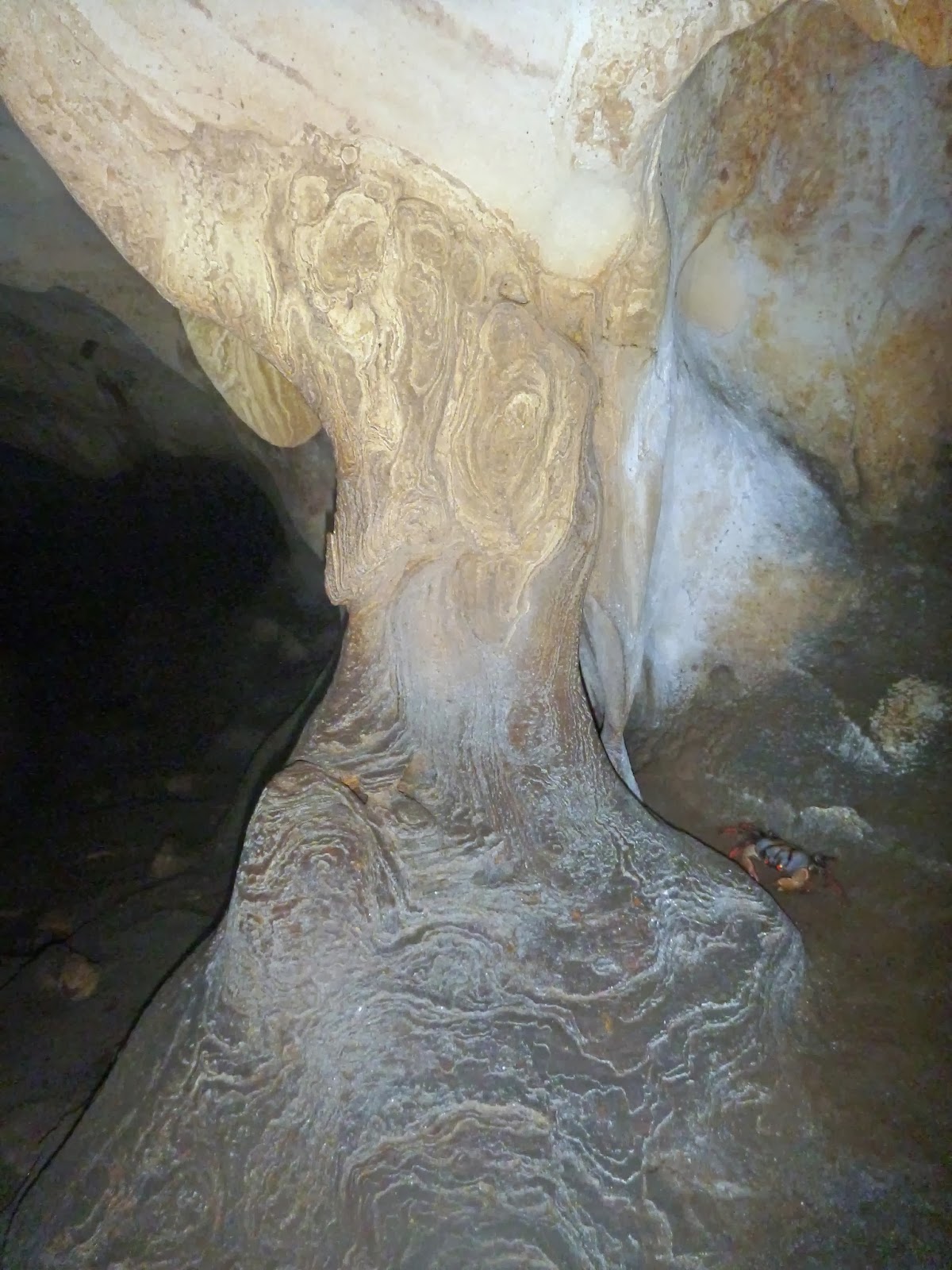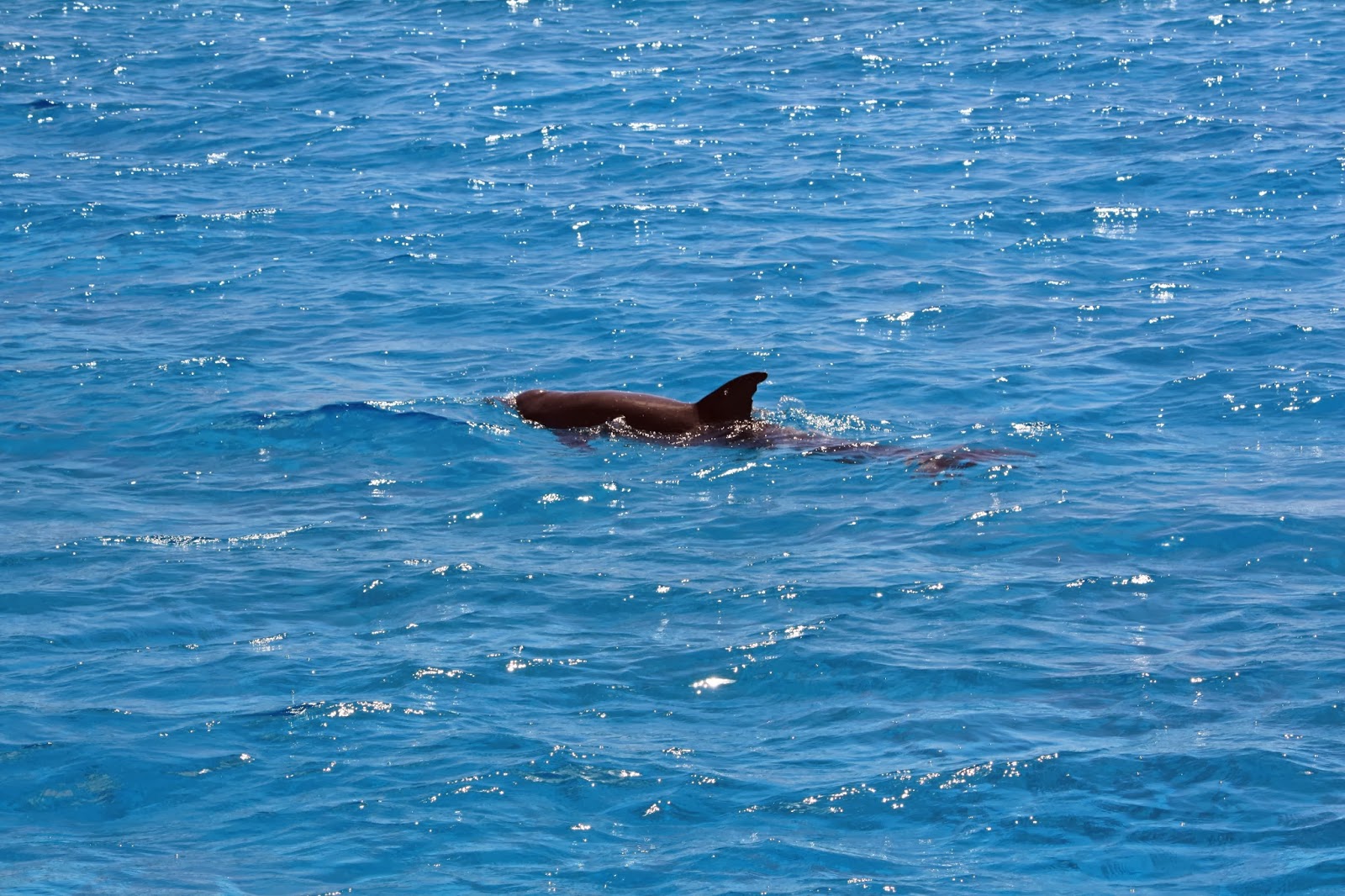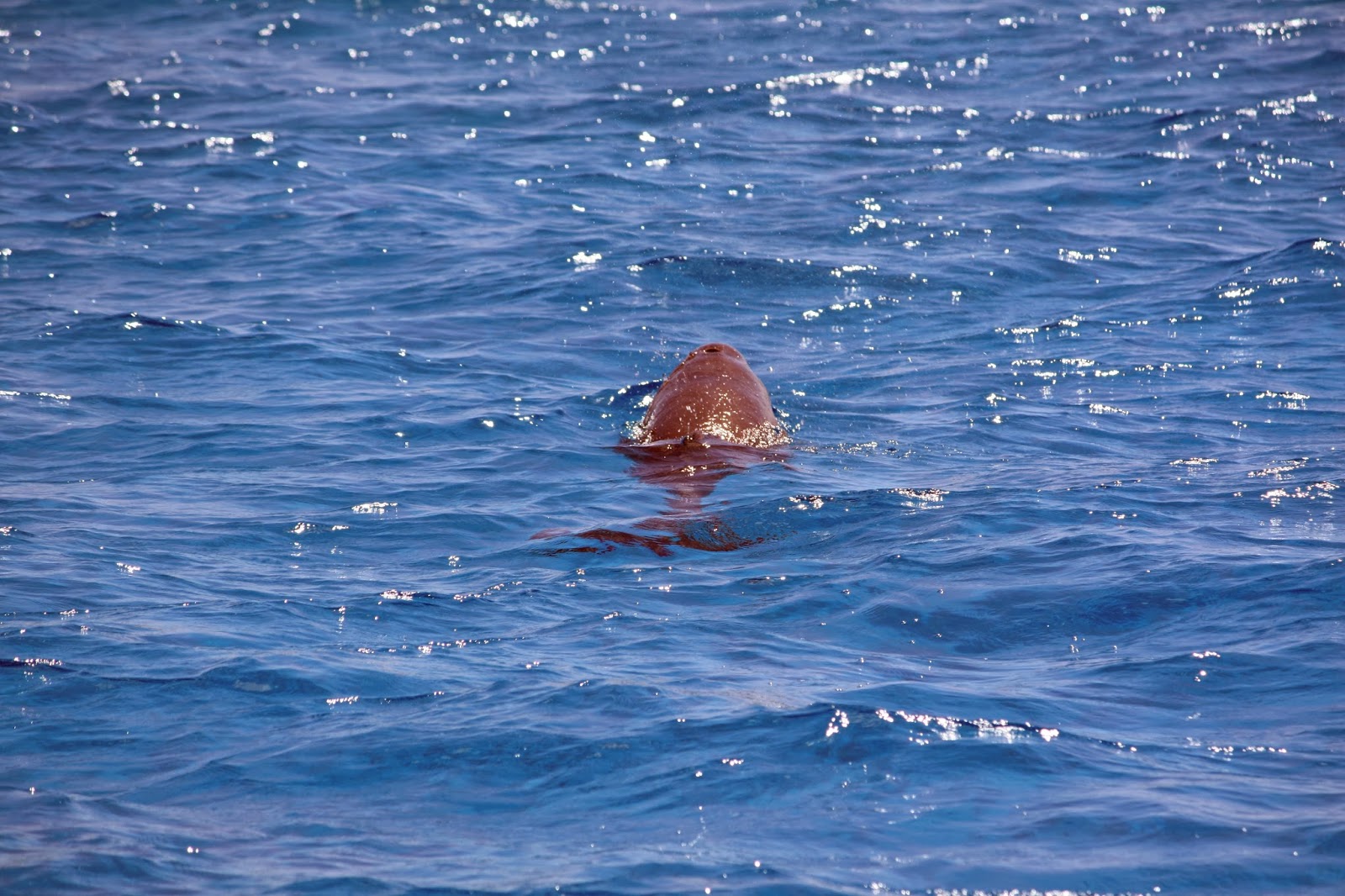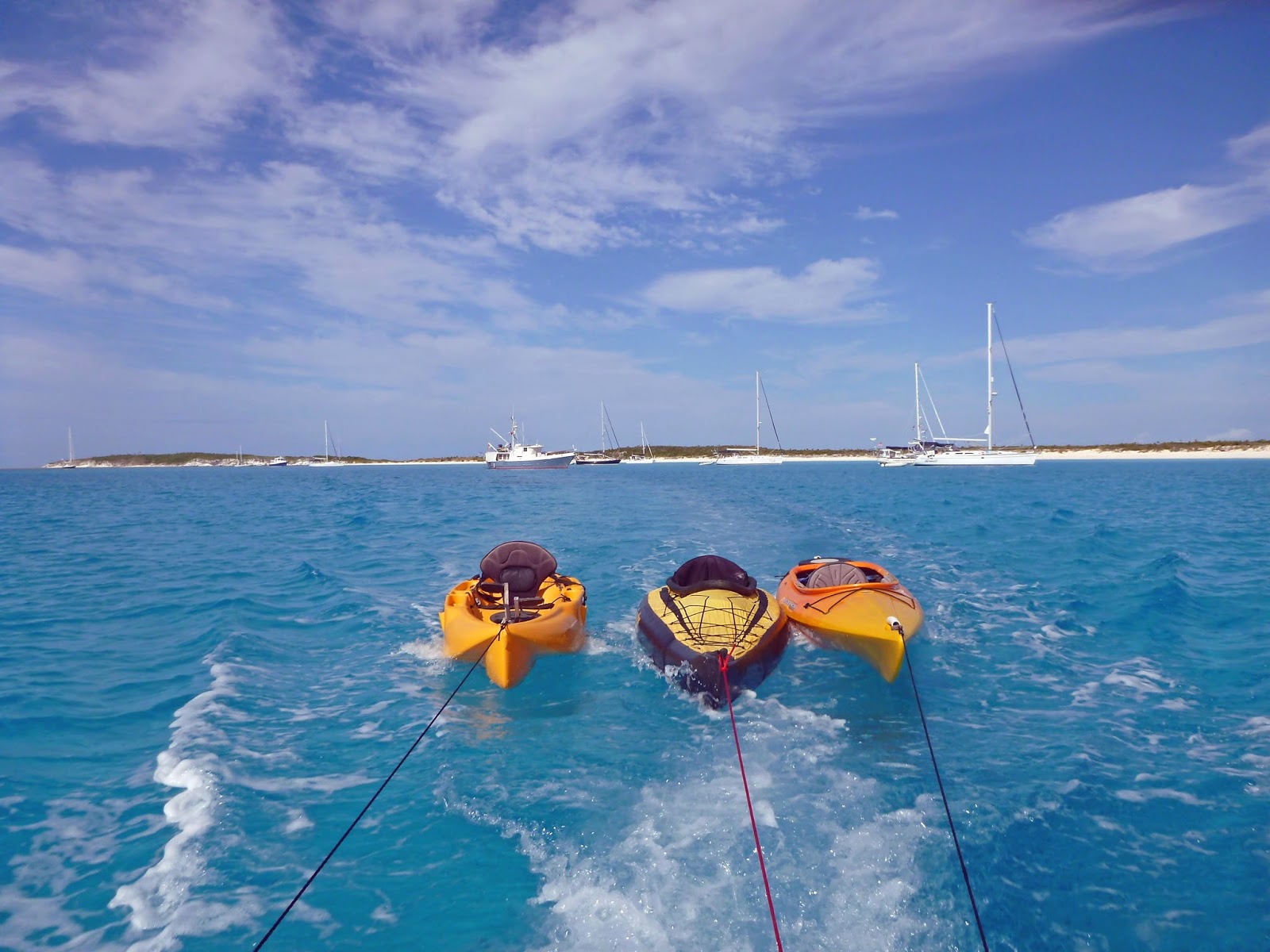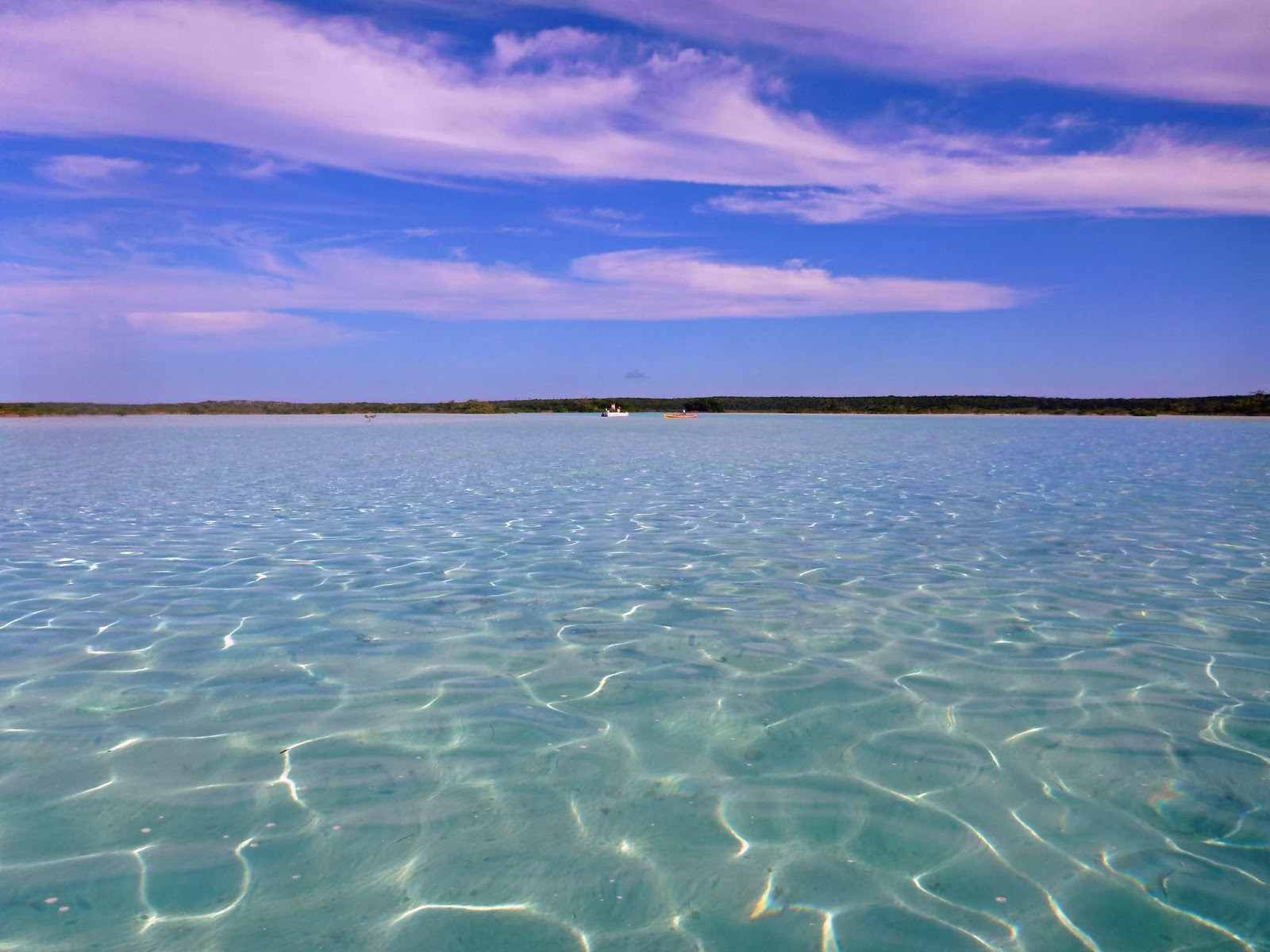Gaze at a reef and
you’ll see a vivid habitat- tan fire coral, purple gorgonians, red lacy-looking
lionfish, and millions of other colors and corals. But what is more interesting
is what you can’t see… and what’s in clear view telling you “don’t touch me”.
In reefs all animals drape themselves in color or camouflage to entice mates,
catch prey, or even hide in plain sight.
 |
| Butterfly Fish (Ref 5) |
There are many
types of camouflage, many of which we have seen in our travels. The most common
is coloring that resembles surroundings. Many wrasses and parrotfish are blue
or brown to mimic the color of the water or coral. Most young parrotfish look a
lot like coral, so that when they move it seems like the coral has come to
life. The most amazing example is the frogfish, a creature even I have not seen,
but still hope to. One that we have seen is the devil scorpion fish.
 |
| Scorpianfish (Ref 10) |
Most of the
angelfish and butterfly fish use disruptive coloring to break up their distinct
shape and become more like the reef. Non-repetitive designs like spots or
stripes may stand out in open water, but they become part of the menagerie of
shapes in a reef. Queen and Emperor Angelfish are blue and yellow striped to
blend in, and Threespot Flounder have eyes on their body to confuse predators.
Yet other
creatures find different ways to hide. Toad fish, stargazers, and rays lie
close to the bottom to eliminate their shadow, making them almost invisible to
predators; they’re just a lump in the sand. Fish like lizardfishes and garden
eels even bury themselves or dig holes. One rare fish that we have seen is the
shortnose batfish that looks basically like a pancake with two legs, a tail,
and a snoot. Many shells bury themselves in sand; the only giveaway is their
track that weaves through the ripples of sand. Wobbegongs are flat and colored
to the bottom, and they’re so confident in their camouflage they won’t move
unless touched.
 |
| Long Nose Batfish (Ref 4) |
|
The most
breathtaking form of camouflage is self-decoration. Hermit crabs carry a heavy
shell, Decorator Crabs load themselves with massive amounts of debris, and
Carrier Shells glue on shell fragments in a spiral pattern. Many shells are
smooth to repel such growths, but others, like the Atlantic Thorny Oyster give
lots of protrusions to attract algae and coral.
 |
| Carrier Shell (Ref 6) |
Trumpet fish and seahorses
display cryptic behavior, mimicking the reef, whether that may be swaying soft
corals or waving grasses. Razorfish and trumpetfish are long and skinny to look
like a floating branch. Groupers and many other fish stay very still, relying
on their coloring to stay inconspicuous. Trumpet fish are the funniest, for
when they are approached, they stay very still, only moving to sway back and
forth. Suddenly they start to change color and dart away to safety.
 |
| Trumpetfish (Ref 8) |
What I think of as
the best camouflage is changing color; the octopus, flounder, and squid do it
well. Octopi not only use it to camouflage, they also use it to hunt. They
drift over a patch of coral when they’re dark brown, and then stop and make
their webbing white. Fish in the rocks think it’s an opening and dart into the
octopus’s hungry mouth. When they’re still they change color rapidly to suit
the coral, which is impressive considering they’re colorblind. Once we saw an
octopus eating a conch, a few tentacles in and around it, but when he saw us he
stopped and hastily changed color, not moving even when we were a few inches
away, as if to say, “it’s mine, go away!”
 |
| Octopus Eating Conch, can you spot him? (Ref 9) |
Open-ocean fish
are often silvery or transparent to color themselves like the sea. Moon jellyfish are almost entirely clear; the
only giveaway is their faint outline and slight shimmer. Fish like tuna are
silvery to reflect light and appear blue from a distance. Some squid illuminate
their underside with sparkles so as not to appear as a dark shape when viewed
from below.
 |
| Squid (Ref 7) |
Some
animals have light-colored underbellies because they are
“counter-shaded.” They are darkest on their backs, which are most
often in direct sunlight, and lightest on their undersides, where a predator
would see against the sun. An effectively camouflaged prey may appear flat and
insubstantial.
Some sea creatures
use motion dazzle. Motion dazzle may degrade predators’ ability to estimate the
prey’s speed and direction accurately, giving the prey an improved chance of escape.
Motion dazzle distorts speed perception, and is most effective at high speeds;
stripes can also distort perception of size (and so, perceived range to the
target). One example is a school of moving striped fish, such as razor fish and
striped catfish.
 |
| Striped Catfish (Ref 13) |
Underwater, the
most complicated disguise is the art of using depth and color. As you may know,
colors disappear with the reds and oranges fading first. Longer wavelengths of
reds and oranges are quickly absorbed by the water. Damselfish, angelfish, and
wrasses decorate themselves with these colors so that their color fades and blends,
with depth, into the colors of the background, blue, green, and yellow
dominating. Clouds of angelfish, and damselfish would blend their colors into a
collage of multi shaded masses, stripes and spots helping to weave the pattern
of the busy reef habitat. The more fish,
the merrier, with such an excess of pattern and color, no one creature stands
out. You can easily imagine how a predator would have trouble picking a single
fish from a school of similar color, constantly moving.
 |
| Anthias Normal (Ref 11) |
But, the color so
useful in fading away can also be used to stand out. Fish use vivid displays of
color to communicate their love to mates… or to warn away unwanted guests. Masters
of beauty, Athias, appear drab normally, but erect their dorsal fins and blare
their colors to attract a mate. The show doesn’t last for long though, the
colorful performance exposing them to great risk from predators. The ability to
change color is a class of skin cells
called chromatophores that show color
through light manipulation or pigmentation. Chromatophores can instantly mark
their bearer as terrifying, invisible, or irresistible.
 |
| Anthias Courting (Ref 12) |
Some other
colorful examples are Stonefish, who use their brown exterior to be invisible,
but when frightened, open their colorful pectoral fins to warn off predators, “Stay
away, I’m poisonous!”, and cleaner shrimp, who are not only colorful, but at a
depth seem black and white, where red turns black.
In the underwater
world, those who stand out and stay still clearly have a meaning. Bold colors
can advertise danger. Clown fish sit in stinging anemones, lionfish are
poisonous, and scorpion fish are too.
Fire urchins are red, yellow, purple and
blue, able to stand out at any depth, and blast the message: toxic. One day I saw a ray that was
unfamiliar to me. It was sitting on the bottom innocently covered with sand,
and stupid me wanted to see what color it was. I dove down to the bottom and
touched it to make it move, since it clearly wasn’t afraid- bad mistake.
Zzzzzzt! I received an electric shock; I
later learned it was a lesser electric ray. I never did see its color, but
lesson learned, and I didn’t try to touch it again. Just yesterday, we saw an
Atlantic Torpedo, able to produce enough electricity to stop a man’s heart.
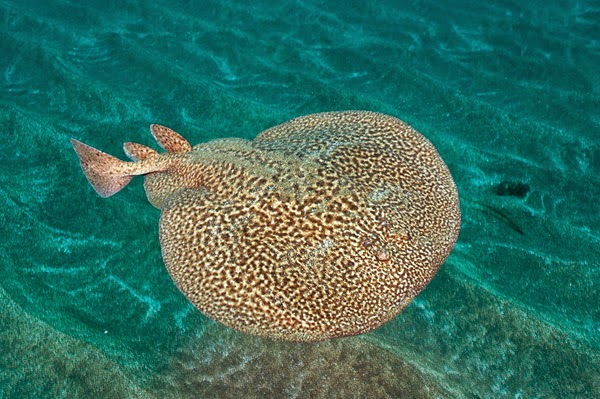 |
| Torpedo Ray (Ref 14) |
But, if a fish
wanted to attract a mate without being seen, how would he do it? To solve this
problem Damselfish use reflectors to flash UV signals to communicate with
others, and predators can’t see it. A male Squarespot Anthias is red and orange
in normal light, at eighty feet is blue and purple, but in UV light is dark
with a brilliant white spot, an easily seen signal to others of his kind, but
not predators.
Normal
0
false
false
false
EN-US
X-NONE
X-NONE
/* Style Definitions */
table.MsoNormalTable
{mso-style-name:”Table Normal”;
mso-tstyle-rowband-size:0;
mso-tstyle-colband-size:0;
mso-style-noshow:yes;
mso-style-priority:99;
mso-style-parent:””;
mso-padding-alt:0in 5.4pt 0in 5.4pt;
mso-para-margin-top:auto;
mso-para-margin-right:0in;
mso-para-margin-bottom:auto;
mso-para-margin-left:0in;
mso-pagination:widow-orphan;
font-size:11.0pt;
font-family:”Calibri”,”sans-serif”;
mso-ascii-font-family:Calibri;
mso-ascii-theme-font:minor-latin;
mso-hansi-font-family:Calibri;
mso-hansi-theme-font:minor-latin;}
Every creature is exceptional
in its own way, a majority amazing in camouflage. Others have found a way to
stand out, extraordinary and bathed in color.
Emily
References:
1. en.wikipedia.org/wiki/Camouflage
2.
National Geographic Vol. 209 NO. 5
May 2005
3.
Reef Fish Identification, Tropical
Pacific
6. http://www.zymoglyphic.org/exhibits/xenophora/images/4.jpg
7. a-z
animals.com
9.
emilygwestonphotography.com
10. http://www.divevietnam.com/
12.
www.flickr.com
14.www.elasmodiver.com

